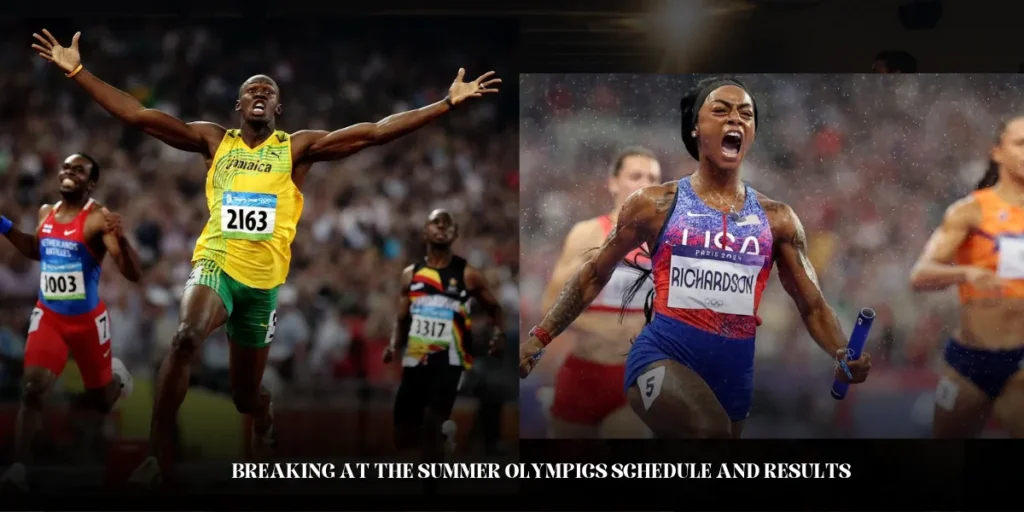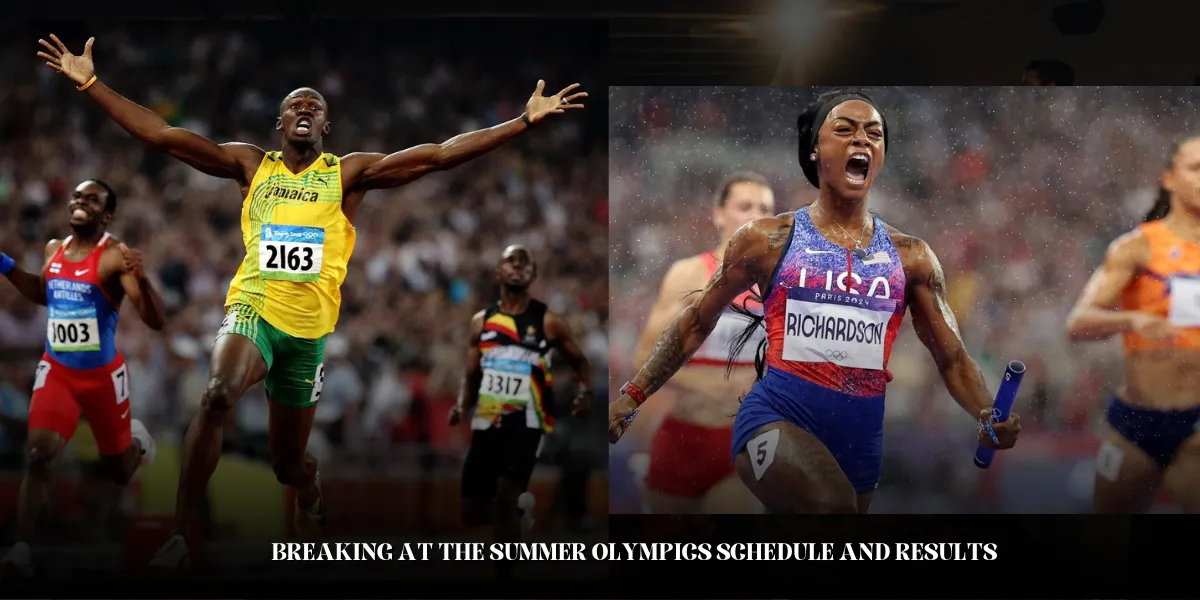
Breaking at the Summer Olympics: A Historic Debut in Paris 2024
breaking at the summer olympics schedule and results In a groundbreaking moment for both dance and sports, breaking—commonly known as breakdancing—made its highly anticipated debut at the Paris 2024 Summer Olympics. This inclusion not only marks a significant milestone in the evolution of the Olympic Games but also cements breaking’s status as a global phenomenon. The competition, held at the historic Place de la Concorde, showcased the incredible talent, artistry, and athleticism of dancers from around the world, attracting widespread attention and acclaim.
What is Breaking?
Breaking, a vibrant and dynamic dance form that emerged from the hip-hop culture of the Bronx in New York City, is characterized by its high-energy movements, intricate footwork, and acrobatic power moves. Over the decades, breaking has evolved from a street dance to a highly respected and competitive art form, with dancers, or “b-boys” and “b-girls,” continually pushing the boundaries of creativity and physical capability.
Breaking is more than just a dance; it is a powerful expression of individuality, culture, and community. Each dancer brings their unique style and personality to the floor, making every performance a distinct and personal statement. The dance form requires not only exceptional physical strength and endurance but also a deep connection to the music and an ability to adapt and innovate on the spot.
Breaking at the Paris 2024 Olympics
The decision to include breaking in the Paris 2024 Olympics was met with excitement and curiosity. As the first time breaking was featured as an Olympic sport, the event was a historic occasion that attracted a diverse and enthusiastic audience. The competition was held at Place de la Concorde, a venue steeped in history and grandeur, which provided a stunning backdrop for the event.
The Competition Format
The breaking competition was structured to highlight the skill, creativity, and athleticism of the dancers. The format consisted of two primary stages:
- Qualifying Round: In the initial stage, dancers competed in groups, performing their best routines to impress the judges. This round was crucial, as only the top performers would advance to the next stage of the competition.
- Battle Round: The winners from the qualifying round moved on to the battle round, where they faced off in one-on-one duels. This stage was the true test of a dancer’s ability, as they had to outmaneuver and outthink their opponents in real-time. Judges evaluated the dancers based on a range of criteria, including originality, technique, performance, and musicality.
A New Era of Olympic Sports
The inclusion of breaking in the Olympics represents a significant shift in the traditional perception of sports. Historically, the Olympics have been dominated by conventional sports such as athletics, gymnastics, and swimming. However, the addition of breaking signifies a broader recognition of the diverse and evolving landscape of athletic competition.
Breaking’s inclusion is a celebration of urban culture, showcasing the athleticism, creativity, and artistry that define this unique dance form. It also highlights the Olympics’ commitment to staying relevant and appealing to a younger, more diverse audience. By embracing breaking, the Olympics have opened the door to new possibilities, paving the way for other non-traditional sports to be recognized on the global stage.
Breaking: More Than Just a Dance
While breaking is undoubtedly a dance form, it is also a rigorous and demanding sport that requires extensive training and dedication. Dancers must develop a range of physical abilities, including strength, flexibility, and endurance. The complexity of the movements, which often involve intricate footwork, spins, and gravity-defying power moves, demands a high level of athleticism.
In addition to the physical demands, breaking also requires a deep understanding of rhythm and music. Dancers must be able to interpret and respond to the music in real-time, creating a seamless and dynamic performance. This blend of physical prowess and musicality is what sets breaking apart from other forms of dance and makes it a compelling and competitive sport.
The Impact of Breaking on the Olympics
The debut of breaking at the Paris 2024 Olympics has had a profound impact on the Games and the global perception of dance as a sport. By including breaking, the Olympics have not only broadened their appeal but have also validated breaking as a legitimate and respected athletic competition.
This historic inclusion has attracted a new generation of viewers, particularly younger audiences who may not have been as engaged with traditional Olympic sports. Breaking’s energetic and visually stunning performances have captivated fans around the world, bringing fresh excitement and diversity to the Games.
Moreover, the inclusion of breaking has provided a platform for dancers from diverse backgrounds to showcase their talents on a global stage. The visibility and recognition gained from competing in the Olympics have the potential to elevate the status of breaking and inspire future generations of dancers.
The Future of Breaking in the Olympics
The success of breaking at the Paris 2024 Olympics has set the stage for its continued presence in future Games. As breaking becomes more integrated into the Olympic framework, it is likely to see further growth and development as a sport. This could lead to the establishment of more structured training programs, increased funding for dancers, and greater opportunities for international competition.
The inclusion of breaking also signals a broader trend within the Olympics to embrace new and diverse sports. As the Games continue to evolve, it is possible that other urban and street sports, such as skateboarding and parkour, could also be recognized and included in future competitions.
Breaking’s Olympic debut has not only showcased the talent and dedication of the dancers but has also highlighted the importance of inclusivity and diversity in sports. The future of breaking is bright, and its impact on the Olympics will be felt for years to come.
Conclusion
The inclusion of breaking in the Paris 2024 Olympics marks a transformative moment in the history of both dance and sports. This landmark event has not only elevated breaking to new heights but has also enriched the Olympic Games with its unique blend of athleticism, creativity, and cultural expression. As breaking continues to gain recognition and popularity, it will undoubtedly inspire a new generation of dancers and athletes, ensuring its place in the world of competitive sports for years to come.

